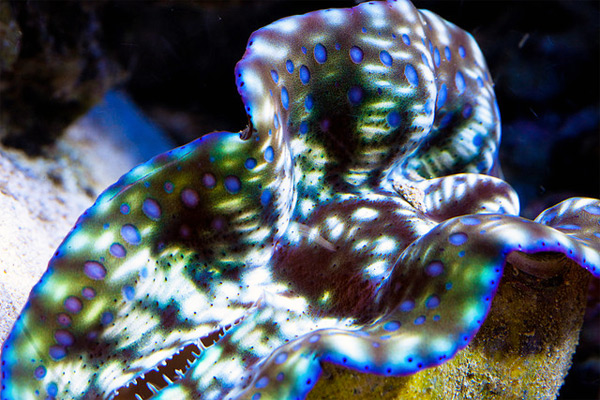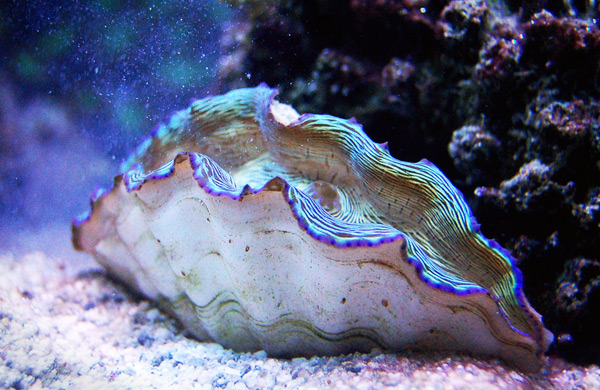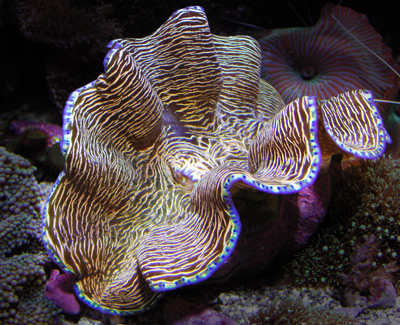Of all the Tridacna spp. clams available to hobbyists, perhaps the hardiest and easiest to maintain of them all is Tridacna derasa, the so-called smooth giant clam. This species is so smooth, in fact, that amorous, gold-chain-wearing male specimens have been overhead in bars making comments like, “Say, did it hurt when you fell from heaven?” and “If I could rearrange the alphabet, I’d put ‘U’ and ‘I’ together.”
Okay, maybe T. derasa isn’t that kind of smooth, but its shell does lack pronounced ridges or scutes, making it relatively smooth to the touch. So, that’s probably where the name actually came from (though you have to admit my explanation is much more fun). It’s a fast-growing species when given proper conditions and a great choice for first-time clam keepers who have the tank space to spare.
Physical traits
T. derasa is the second largest of the Tridacna clams, potentially reaching 18 inches to upwards of 2 feet in length. (The biggest of the bunch, of course, is T. gigas, which can exceed a whopping 4 feet.) Its highly symmetrical shell has five to seven vertical ribs and, as mentioned, is fairly smooth to the touch. The tentacles lining the inhalant siphon of this species tend to be relatively large, and the byssal opening on the bottom of the shell is smaller and narrower than this same feature on other tridacnids.

The mantle of this species tends to be some shade of gold, brown, orange, or green with mottled or streaked patterning and often a bright blue margin. However, there are so many possible color/pattern variations to this species that any attempt to paint a general picture is more or less an exercise in futility (as is the case with most of the tridacnids, quite frankly).
Housing, lighting, and current
Considering this species prodigious growth potential and demand for good, stable water conditions, it should be kept in a commensurately large aquarium system—in the vicinity of 100 gallons. However, the actual volume of the tank is less important than its footprint. This species should be placed down on the substrate, rather than up on the rockwork, so the tank dimensions must allow for a decent amount of open bottom space after aquascaping.
T. derasa, like all the giant clams, harbors symbiotic zooxanthellae in its tissues, so it demands moderate to bright reef-grade lighting. Water movement in the system should be moderate and turbulent. You don’t want to blast these clams with a powerful linear current.

Also, keep a close eye on the system’s calcium and alkalinity levels, as these fast-growing clams can rapidly deplete these elements in building their shells.
Feeding
T. derasa derives nutrition from both filter feeding and the photosynthesis of its zooxanthellae. However, as the clam grows, it depends less on the former and more on the latter. Plan to offer small specimens regular feedings with phytoplankton at least until they reach a shell length of approximately 4 inches.
Compatibility
The smooth giant clam is a great reef aquarium candidate, again provided it’s afforded adequate space and assuming it’s positioned at a safe distance from any stinging coral/anemone tentacles.
With respect to fish tankmates, keep in mind that species prone to nipping at fleshy invertebrates, for example certain tangs, rabbitfishes, butterflyfishes and dwarf angels, may exhibit this behavior toward clam mantles. A little research will quickly reveal which fish species are best left out of a tank containing tridacnid clams.



